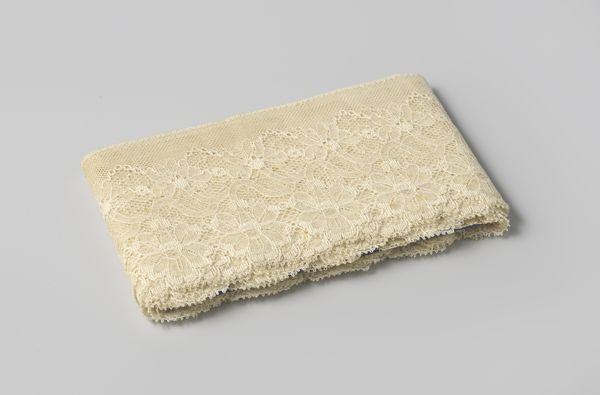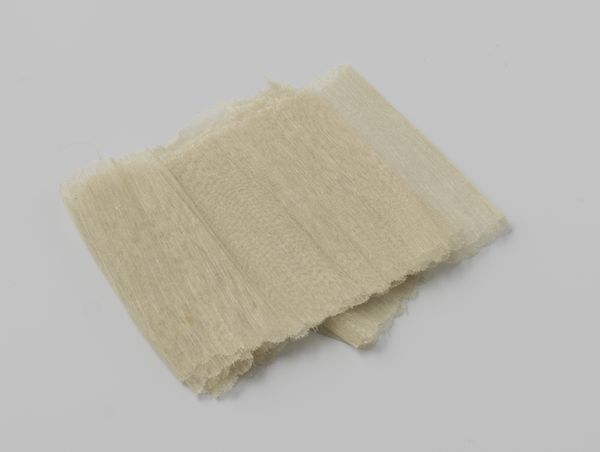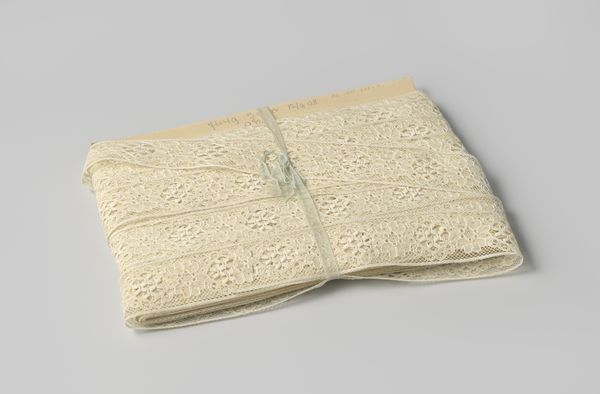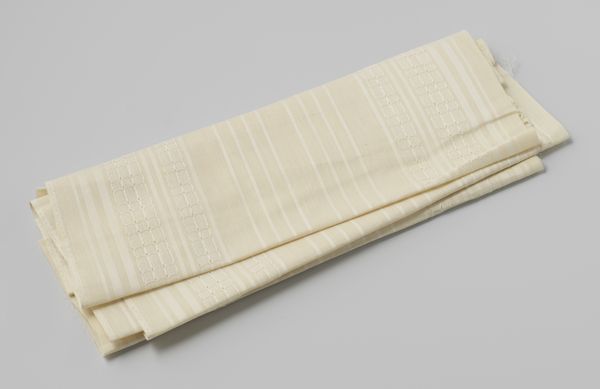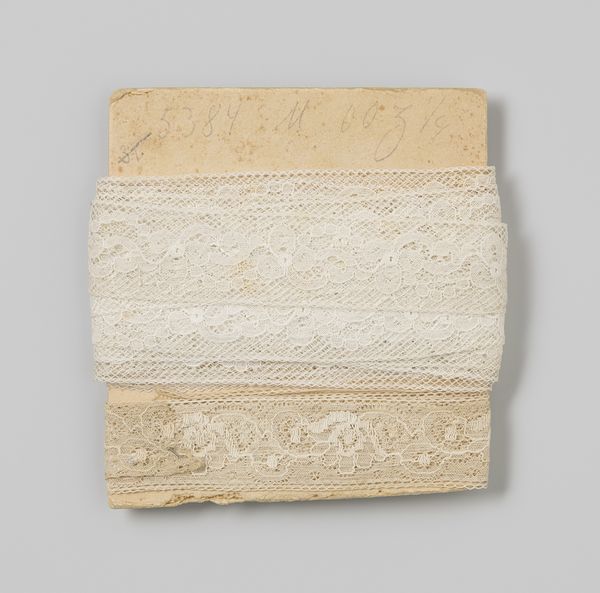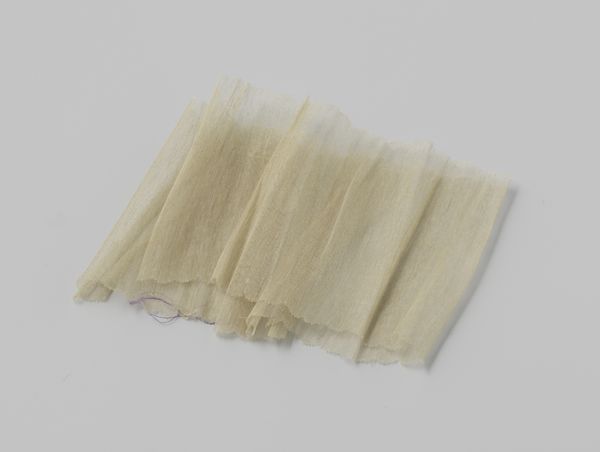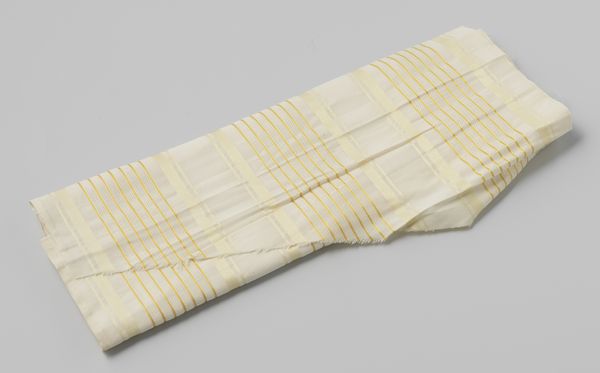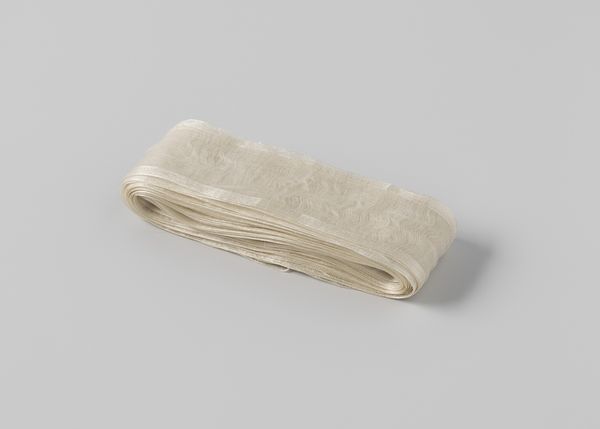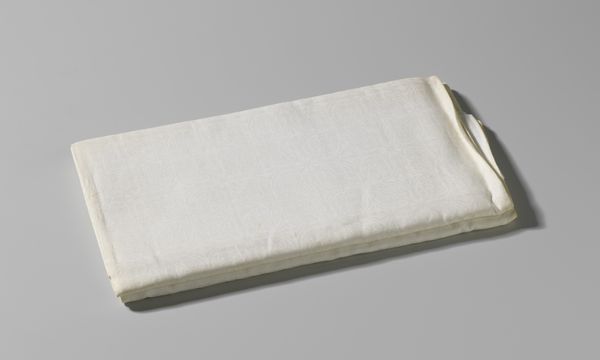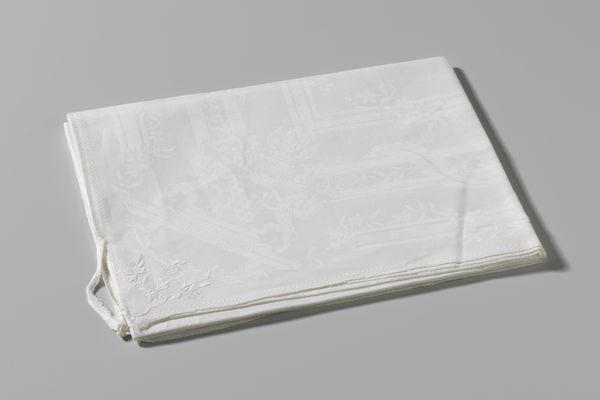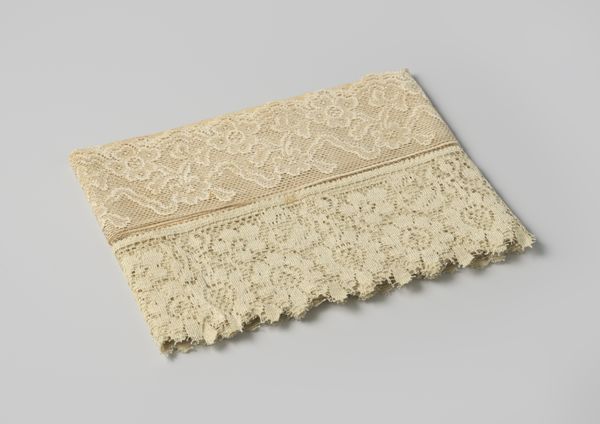
Tussenzetsel van roomwitte machinale kant met patroon van doorlopende bladrank, op karton c. 1925
0:00
0:00
gustavschnitzler
Rijksmuseum
textile
#
textile
Dimensions: width 4 cm, width 15 cm, length 20 cm
Copyright: Rijks Museum: Open Domain
Curator: This object from around 1925, held here at the Rijksmuseum, is described as machine-made, creamy-white lace trim featuring a continuous leaf-scroll pattern, mounted on cardboard. Editor: It looks almost bridal, but with a melancholic tinge. A forgotten detail, patiently waiting for its purpose. The neat little rolls create a hypnotic rhythm... but is it sad? Curator: Considering the historical context, mass-produced lace signified democratization in fashion and textiles. The intricate patterns, once exclusive to the upper class and created through laborious handcraft, became accessible to a wider population via machines. What was once carefully crafted is now cranked out at scale, the labor outsourced to factory. Editor: Absolutely. It’s interesting that even as the means of production shifts, the *idea* of handmade elegance endures – look at the attempt to simulate hand-crafted lace, those little repeated leaf motifs are kind of cute. Does the object embody a tension, then? The embrace of technology clashing against something considered more elevated, personal…dare I say, artful? Curator: The material properties are fascinating, aren’t they? The stark juxtaposition of the delicate textile with the industrial process required for it hints at shifts in the production and the value that has been placed on textiles over the past century. It calls into question our ideas of art vs. craft too. Is mass-produced lace of value when compared to individually-crafted handmade lace of generations past? Is its purpose diminished? Editor: It's ironic how something so designed for adornment is now displayed without a dress or a cuff to grace! And yet, it holds a different kind of beauty. Almost philosophical! Perhaps the act of mechanical reproduction drained some soulfulness from it? Curator: Or perhaps, in its accessibility, it found a new soul— a communal one, interwoven into the everyday lives of many. We can appreciate this lace today as not only textile, but also an enduring monument to change. Editor: I agree; this understated roll becomes a window into evolving cultural priorities, our shifting notions of craft, and also industrial achievement. I wonder, when our own age is considered in such an historical lens, what seemingly minor technological artefacts would convey volumes?
Comments
No comments
Be the first to comment and join the conversation on the ultimate creative platform.

